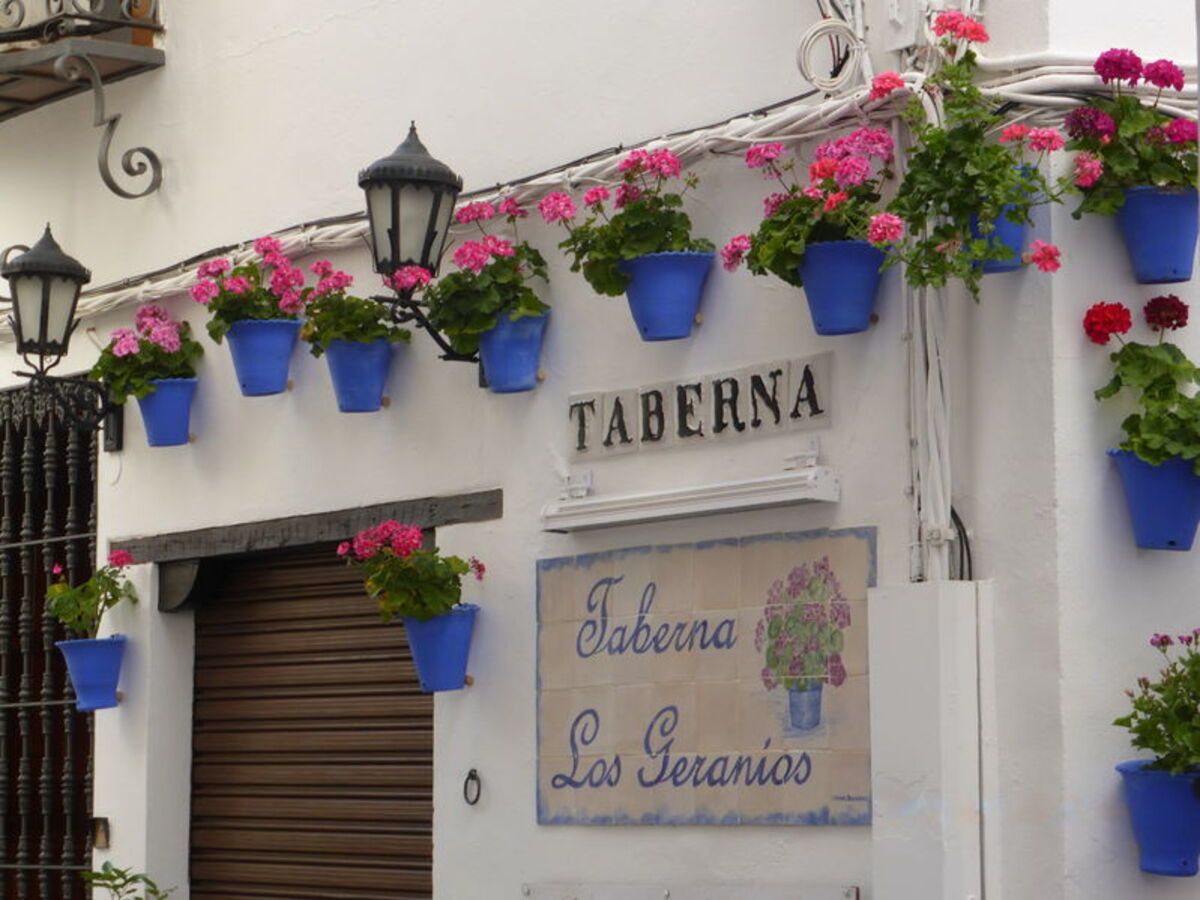Discover the History of the Iconic Jewish Quarter of Cordoba
The Jewish Quarter of Cordoba is a place of great historical and cultural significance. Declared a UNESCO World Heritage Site, its narrow, cobbled streets have witnessed the presence of the Jewish community between the 10th and 15th centuries. With a distinctive Islamic layout, this neighborhood harbors numerous emblematic corners. Explore the history and charms of Córdoba’s Jewish Quarter in this informative article. If you are planning a visit to this beautiful city, here you will uncover the keys to its essence.
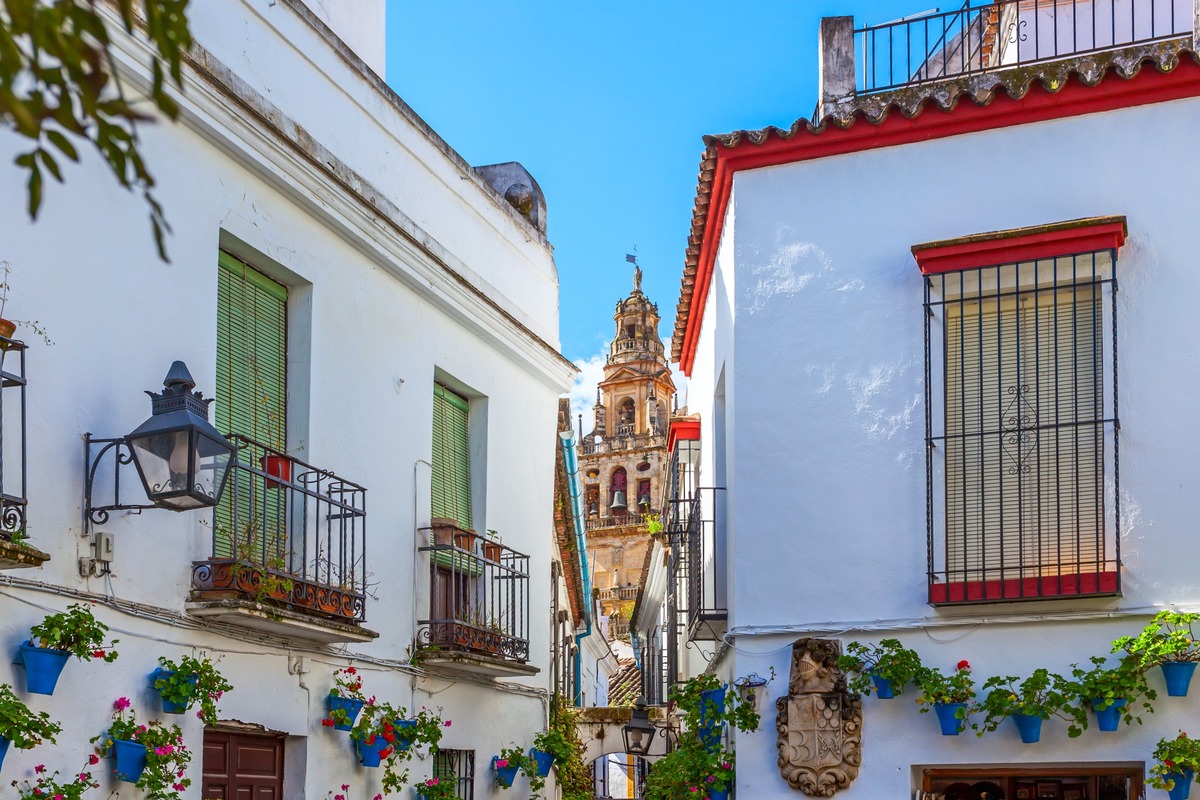
History of the Jewish Quarter of Cordoba
The Jewish Quarter of Córdoba has a rich and fascinating history that dates back primarily to the 13th and 15th centuries, although there is evidence of its presence even in Roman times. After the Muslim invasion, the Jews living in this neighborhood were separated from the rest of the city by a walled enclosure. However, not all Jews resided in this place, as some settled in nearby areas or even in other parts of the city.
Throughout the centuries, the Jewish Quarter underwent significant changes. The conquest of Córdoba in 1236 by Fernando II allowed the Jews to return to the Jewish Quarter. Later, in 1272, Alfonso X the Wise delimited the Jews around the Mosque-Cathedral. After numerous attacks and uprisings in the late 14th century and throughout the 15th century, in 1492, Queen Isabella I decreed the final expulsion of Jews from the kingdom.
Today, the Jewish Quarter of Córdoba is recognized for both its historical and cultural significance. This charming space, with labyrinthine streets, houses important points of interest such as the Synagogue, the Casa de Sefarad, or the Plaza de Tiberíades with the statue of Maimonides, among others. Visiting this neighborhood means delving into the history of the Jewish community in Córdoba and discovering its unique legacy in every corner.
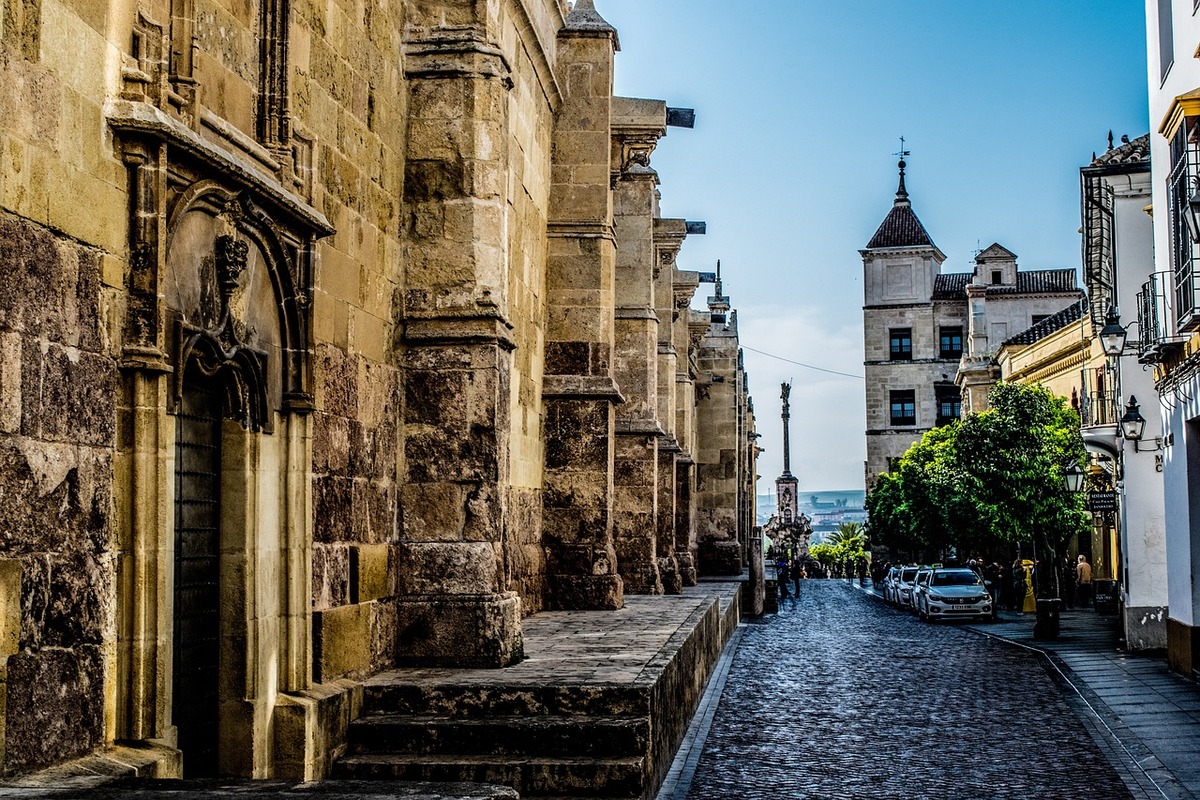
Cultural and Heritage Importance of the Jewish Quarter of Cordoba
The Jewish Quarter of Córdoba is an essential neighborhood of the city, recognized as a UNESCO World Heritage Site in 1994. Its significance lies in being a witness to the Jewish people in the area during the 10th to 15th centuries. This place features an Islamic architectural layout characterized by its beautiful narrow streets and distinctive cobblestone pathways.
The Jewish Quarter houses a series of points of interest that reflect its cultural and heritage importance. Notable among them is the Synagogue, the only one in Andalusia and considered the third best-preserved in the country, and the Casa de la Memoria, which brings us closer to the history and Sephardic traditions.
Similarly, the Plaza de Tiberíades, with the statue of Maimonides, and the Chapel of San Bartolomé are spaces that are part of the cultural and heritage fabric of this historic neighborhood. The Jewish Quarter of Córdoba is a unique place that continues to attract tourists from around the world interested in exploring and understanding the city’s history.
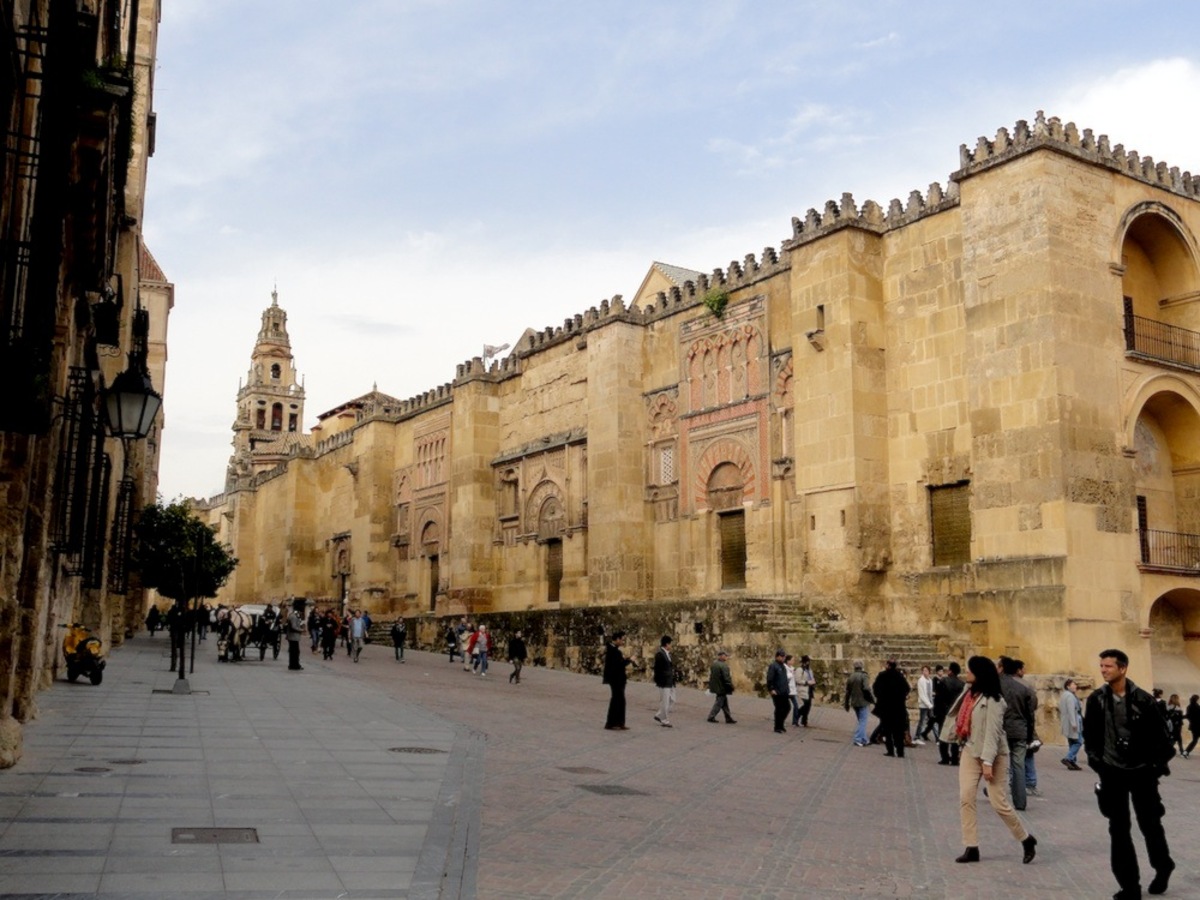
Architectural Features of the Jewish Quarter
The typical layout of the Jewish Quarter consists of small pathways that lead to cobblestone streets and dead-end alleys called adarves. The boundaries of the Jewish quarter extend from the Almodóvar Gate to the Mosque-Cathedral and the ancient Andalusian fortress, as well as the streets Judíos, Albucasis, Manríquez, and Averroes, among others.
Its architectural charm is reflected in its Mudejar-style houses and white facades adorned with blue and green details. The patios and balconies with pots and flowers provide a picturesque and welcoming atmosphere. Additionally, characteristic decorative elements such as lattices and horseshoe arches can be appreciated.
The area is full of charming corners, including cobbled squares and ancient doors that evoke the Jewish legacy in the city. Any visitor to Córdoba should not miss the opportunity to stroll through these streets full of history with unique architectural beauty.
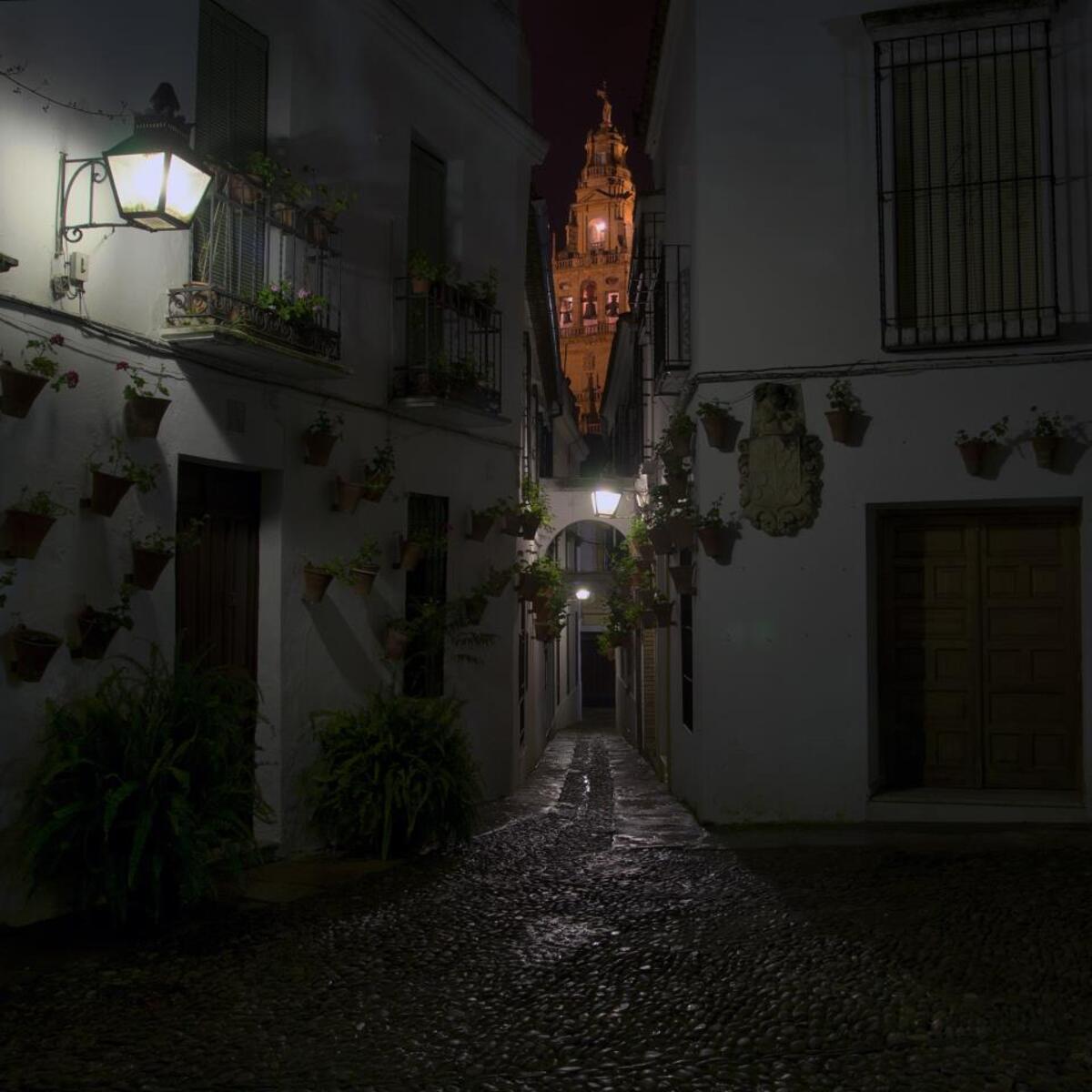
Tour of the Emblematic Streets of the Jewish Quarter of Cordoba
Immerse yourself in a fascinating tour through the streets of the Jewish Quarter of Córdoba, where every corner tells a millennial story. This small urban maze will transport you through time, allowing you to imagine what life was like in this ancient Jewish community.
Begin your journey on the iconic Judíos Street, where you can appreciate the traditional architecture of houses and whitewashed facades. Continue through Albucasis Street, the charming Plaza de Judá Leví, and be amazed by the enchanting atmosphere of Manríquez Street.
Another essential point in this tour is Averroes Street, where you’ll find the Municipal Craft Souk or the Roman Bridge, a spectacular bridge over the Guadalquivir River that connects the Jewish Quarter with the Campo de la Verdad – Miraflores. Don’t forget to stroll through the wonderful streets of Céspedes or Velázquez Bosco, which lead to one of the main attractions of the Jewish Quarter: the Mosque-Cathedral, a monument of stunning beauty.
There are many other alleys and adarves to discover in the Jewish Quarter of Córdoba, each with its own charm and stories to tell. Don’t miss the opportunity to get lost in this intricate network full of magic and tradition during your visit to the city.
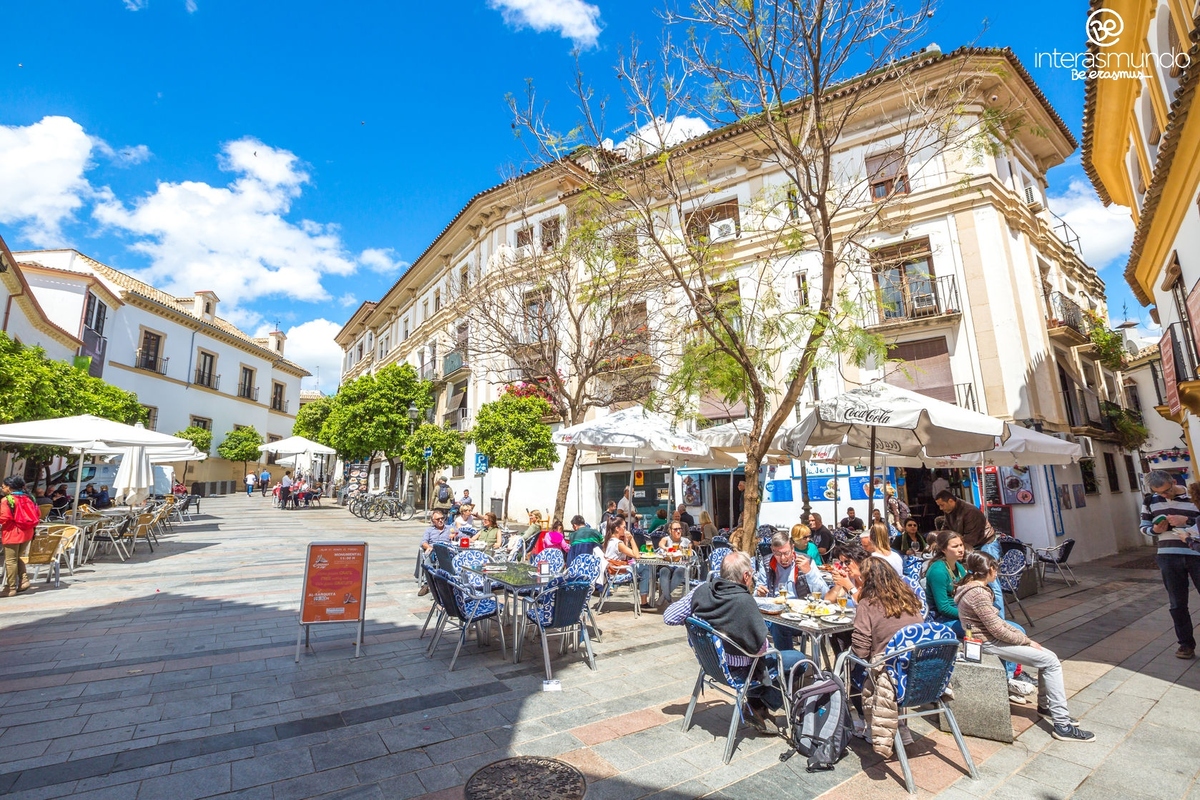
Points of Interest in the Jewish Quarter of Cordoba
The Jewish Quarter of Córdoba is home to a multitude of points of interest that reflect the rich history and culture of the city’s Jewish community. Here are some of the main ones:
- Synagogue: Built between 1314 and 1315, it is unique in Andalusia and considered the third best-preserved in Spain. It is located on Judíos Street, 20.
- Casa de Sefarad – Casa de la Memoria: A space dedicated to the memory and Sephardic culture in Córdoba, featuring a permanent exhibition called “Memories of Sepharad.”
- Plaza de Tiberíades: With the statue of Maimonides, a prominent Jewish philosopher and physician. Its name is derived from one of the four holy cities of Israel.
- Municipal Souk or Craft Market: Declared a Cultural Interest, it has a spacious and interesting history dating back to the 16th century.
These are just a few examples of the places that await you in the Jewish Quarter of Córdoba. Let’s explore each of them in more detail.
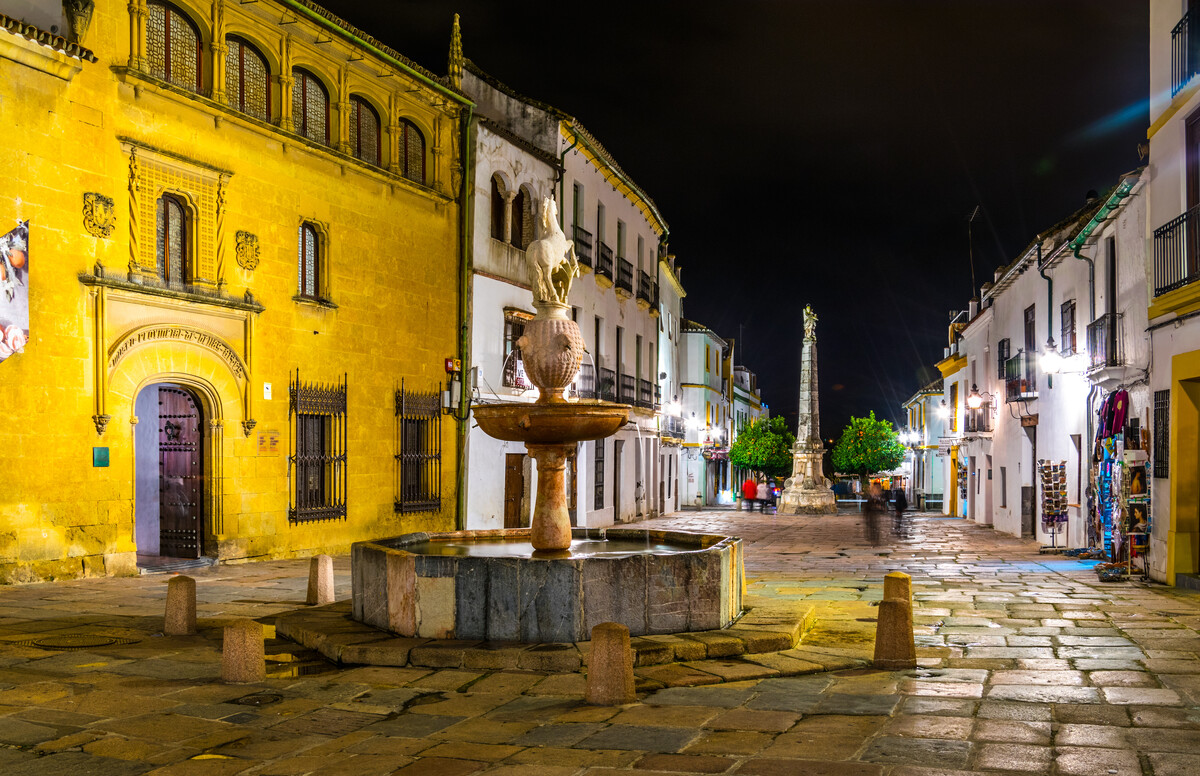
The Synagogue of Cordoba: Jewel of the Jewish Quarter
The Synagogue stands out as one of the most prominent treasures of the Jewish Quarter. Built in the 14th century, it is considered a masterpiece of architecture and one of the most important synagogues in Spain.
With its Mudéjar style and Gothic elements, this enclave presents a unique beauty. Its rectangular plan features five naves separated by horseshoe arches and marble columns. Decorative details, such as stuccos with geometric motifs and openwork friezes, bear witness to the artistic splendor of the time.
Inside, the bimah, an elevated platform from which the Torah was read, is a notable feature. Remnants of frescoes and a small adjoining room, which served as a school for the children of the Jewish community, can also be appreciated.
Today, the Synagogue has become an important cultural and tourist center. In addition to its historical and architectural value, it hosts exhibitions and events that allow visitors to delve into the history and traditions of the era.
Visiting the Synagogue is a unique opportunity to immerse yourself in the history of the Jewish Quarter and appreciate the Jewish heritage in the city. Its elegance and historical significance make it a true treasure that you cannot miss exploring during your visit to Córdoba.

The Casa de Sefarad and its Historical Relevance
The Casa de Sefarad – Casa de la Memoria, located in the heart of the Jewish Quarter of Córdoba, is dedicated to disseminating Sephardic heritage, emphasizing the contributions of Jews to the history and culture of Spain.
You can explore thematic exhibitions that cover various aspects of Jewish life, from literature and music to gastronomy and religious traditions. Additionally, it houses a specialized library and a conference room where educational and cultural activities take place.
This institution is a living testimony to the coexistence and cultural richness that existed in the Jewish Quarter of Córdoba. Through its programs and events, the Casa de Sefarad seeks to promote intercultural dialogue and foster respect for different traditions and beliefs.
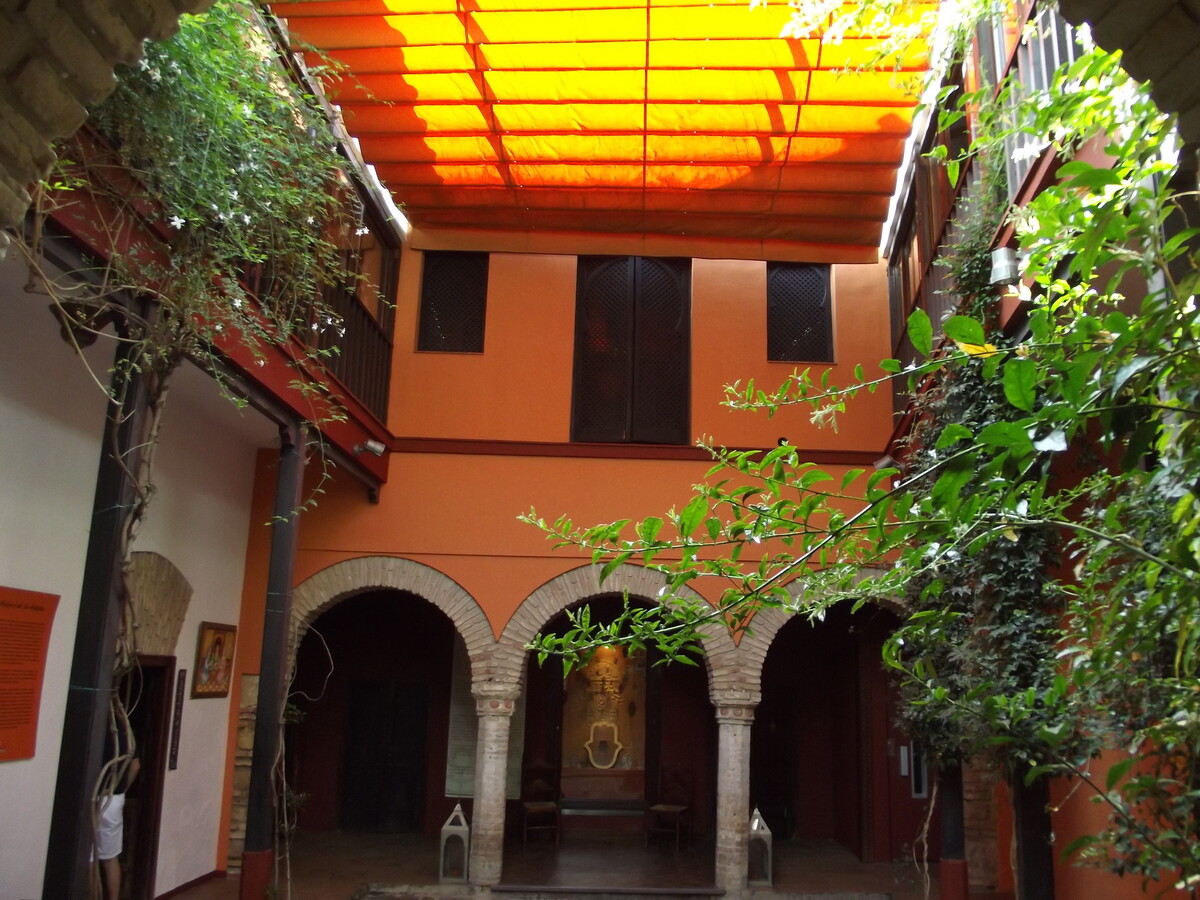
The Plaza de Tiberiades and the Statue of Maimonides
Another charming corner of the Jewish Quarter of Córdoba is the Plaza de Tiberiades, where the statue of the Jewish physician and philosopher Maimonides is located. In this small square, visitors can enjoy a tranquil atmosphere very close to the Synagogue.
The statue depicts Maimonides seated on his tomb, which is currently located in Tiberiades, one of the four Holy Cities of Israel (hence the name of the square). This rabbi left a valuable legacy in various fields of knowledge during part of the Caliphate of Córdoba in Al-Andalus.
Maimonides is known for his significant contributions to philosophy, medicine, and Jewish theology. His most famous work, the “Guide for the Perplexed,” is a philosophical work that addresses the harmonization between Jewish faith and Aristotelian philosophy.
The Plaza de Tiberiades is also a meeting place and an ideal starting point to explore the streets of the Jewish Quarter. In its surroundings, you can find small Jewish craft shops where you can acquire unique and special souvenirs.
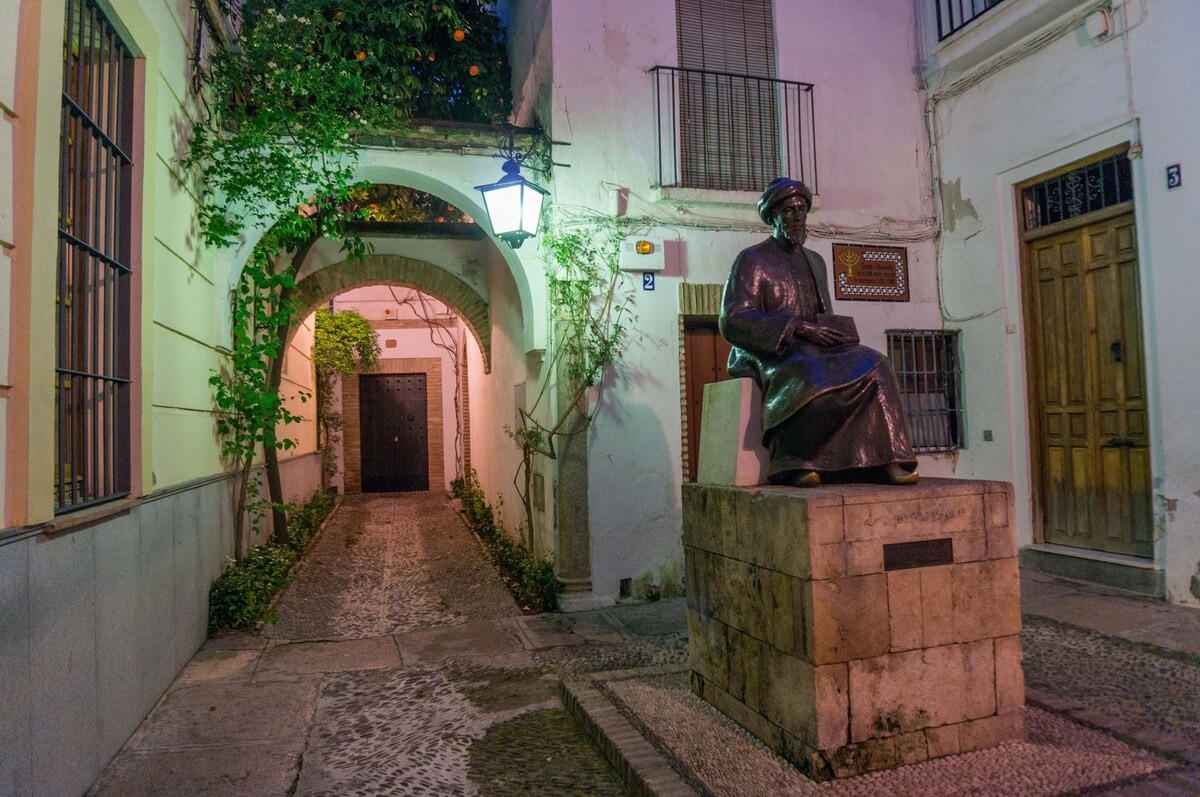
Other Notable Monuments in the Jewish Quarter of Córdoba
The Jewish Quarter of Córdoba houses other monuments of great historical and architectural importance. These places offer a more comprehensive view of Jewish life in this area of the city. Here are some of them:
- La Capilla de San Bartolomé: Anchored in the current Faculty of Philosophy and Letters, the former Hospital del Cardenal Salazar, with Mudéjar elements, built between the 14th and 15th centuries.
- La Calleja de las Flores: This charming cobbled street is characterized by its white facades and colorful flower pots. It is a perfect place for a stroll and to enjoy the unique atmosphere of the Jewish Quarter.
- El Puente Romano: Although not located within the Jewish Quarter itself, the Roman Bridge is an important symbol of the city that connects the Campo de la Verdad neighborhood with the historic center. Admiring its beauty and crossing it is a fundamental part of a visit to Córdoba.
- El Palacio de Viana: Located near the Jewish Quarter, this Renaissance palace is known for its twelve courtyards, representing the Cordovan tradition of floral patios. It is a must-visit for architecture and natural beauty enthusiasts.
These monuments complement the experience of visiting the Jewish Quarter of Córdoba and allow you to immerse even further in its fascinating history and cultural heritage.
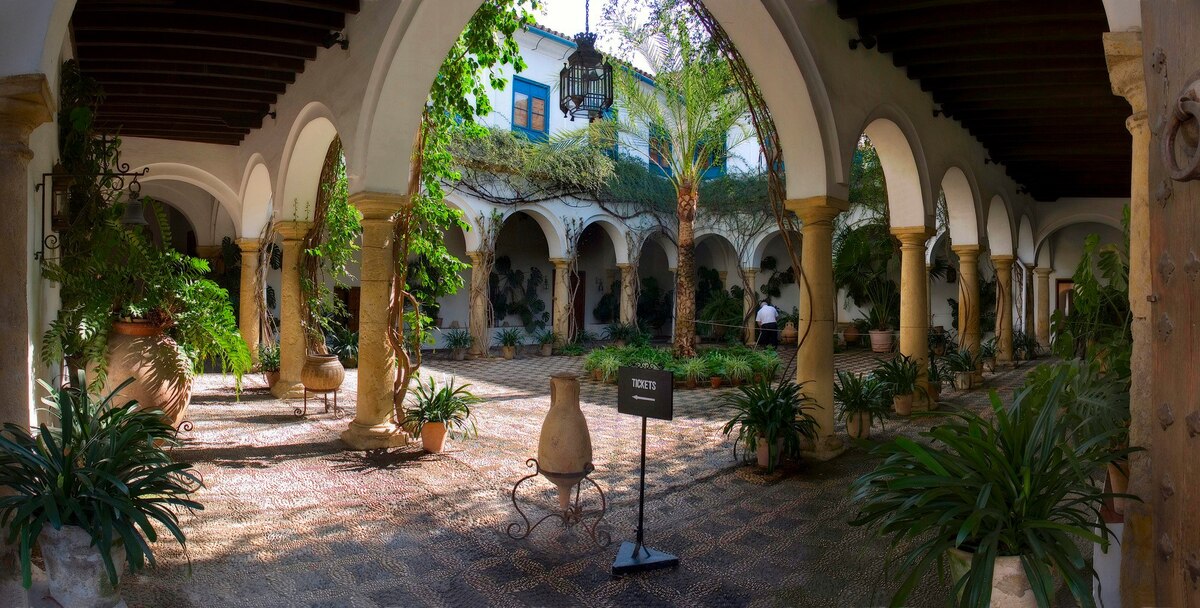
Tourist Activities and Guided Tours in the Jewish Quarter
The Jewish Quarter of Córdoba offers a wide variety of tourist activities and guided tours that will allow you to immerse yourself in its rich history and discover all its charms. Here are some must-try options to make the most of your visit:
- Historical Monuments Tour: Embark on a fascinating journey through the main monuments of the Jewish Quarter. With the guidance of local experts, you will learn about the Jewish influence on the culture and artistic legacy of this community.
- Stroll Through Highlighted Streets and Plazas: Let yourself be enchanted by its streets while discovering corners full of history and tradition. Explore streets like Judíos, Albucasis, Manríquez, or Deanes, among others, and marvel at their unique atmosphere.
- Visit to the Synagogue: Don’t miss the opportunity to visit the Synagogue, one of the treasures of the Jewish Quarter of Córdoba. Admire its architectural beauty and discover traces of the religious and cultural life of the Jewish community in medieval times.
- Gastronomic Experiences: Delight in Jewish cuisine at restaurants in the Jewish Quarter, such as “Casa Mazal” on Tomás Conde Street, where you can taste the most traditional Sephardic dishes.
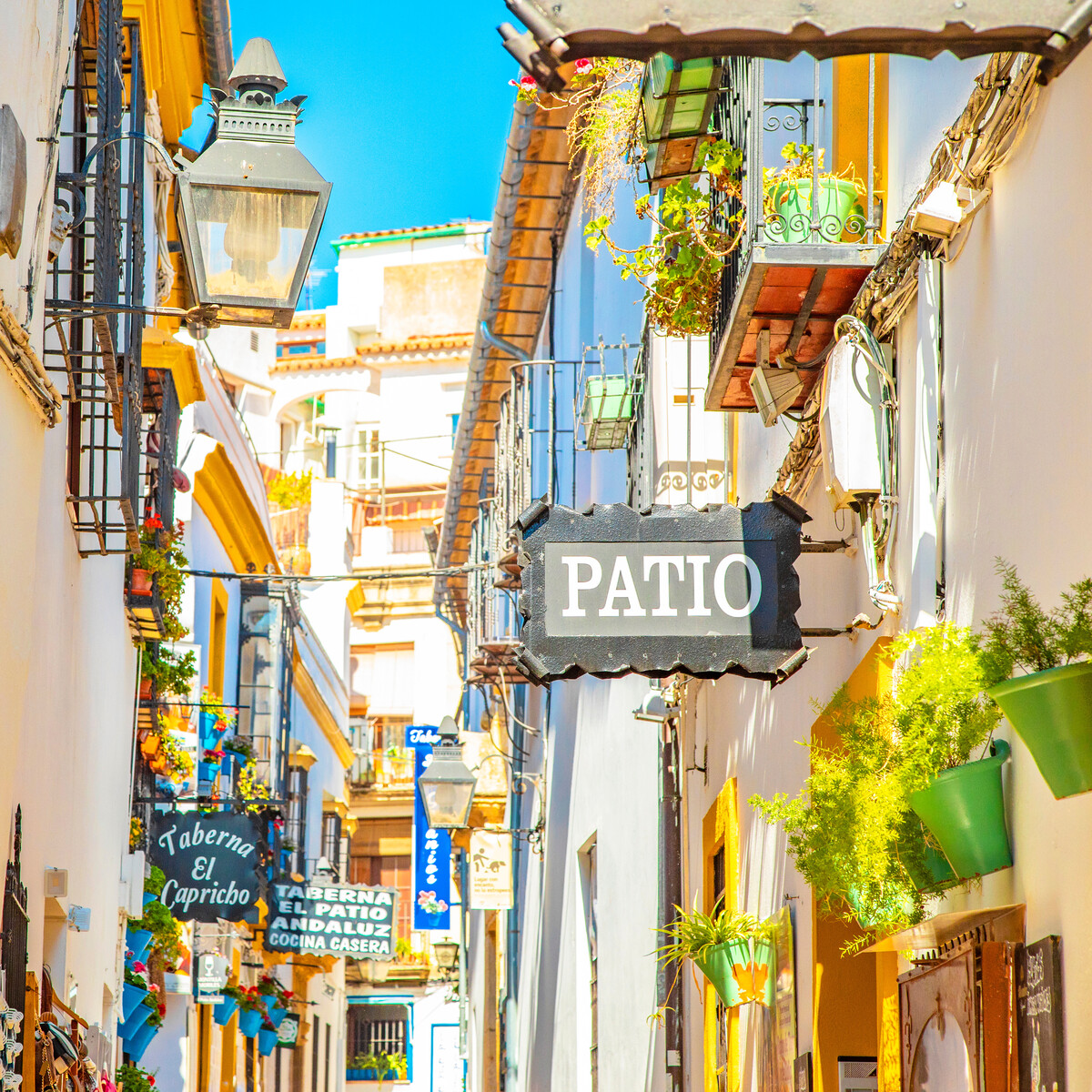
The Jewish Quarter of Cordoba and Holy Week
The Jewish Quarter of Córdoba witnesses an interesting cultural blend during the celebration of Holy Week. During these dates, its narrow streets and squares are filled with processions and religious fervor, creating a unique and exciting atmosphere.
Córdoba’s Holy Week stands out for the participation of various brotherhoods and fraternities, parading through the city streets with their processional floats. Residents and tourists gather to witness this religious spectacle, admiring the beauty of the floats, the music of brass and drum bands, and the visual impact of the revered religious images.
In addition, Holy Week also offers other activities related to religious tradition, such as sacred music concerts, exhibitions of religious art, and guided tours of the most relevant temples. Visitors have the opportunity to immerse themselves in the special atmosphere of this celebration, appreciating the cultural and religious heritage found in every corner of Córdoba.

- Religious processions with processional floats.
- Participation of brotherhoods and fraternities.
- Music from brass and drum bands, musical groups, or solemn silence.
- Venerated religious images during Holy Week.
- Sacred music concerts and exhibitions of religious art.
Holy Week passing through the Jewish Quarter of Córdoba is a unique moment to experience the fusion of cultural and religious traditions in a historic and charming environment. Don’t miss this opportunity to live one of the city’s most prominent celebrations while exploring the iconic corners of the Jewish Quarter.
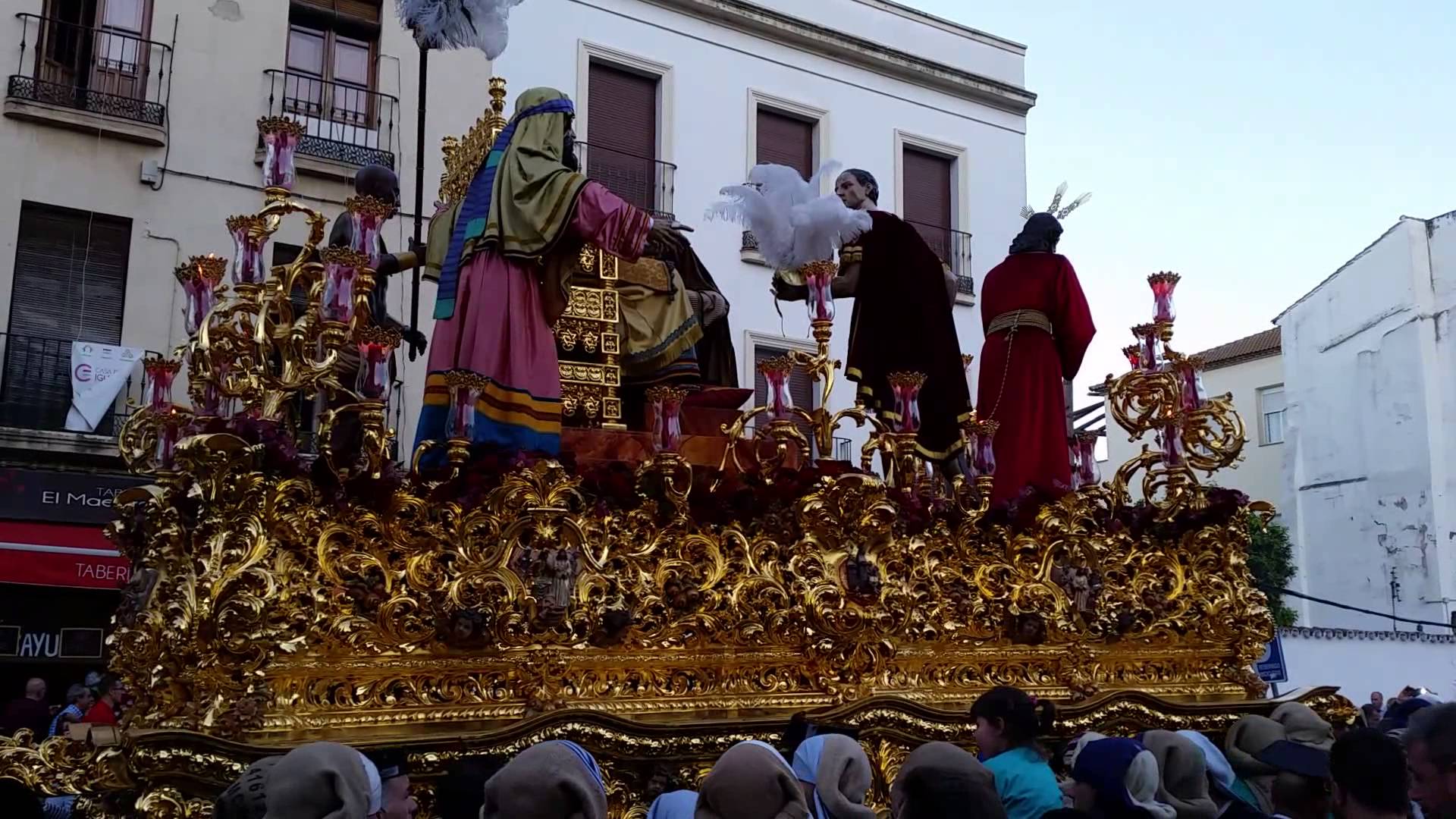
Crafts and Jewish Tradition Items in the Jewish Quarter
The Jewish Quarter of Córdoba is a place where Jewish tradition is felt in every corner. Among its streets, there are shops and workshops where articles representing the rich Jewish culture are crafted and sold.
One of the most prominent items is Sephardic jewelry, which combines traditional designs with contemporary techniques. These pieces of jewelry, crafted with precious materials like gold and silver, convey the history and symbols of the Jewish community.
- Kippahs, also known as yarmulkes, are another important element of Jewish tradition. These small hats are worn by Jewish men as a sign of respect toward God.
- Mezuzot, small scrolls with passages from the Torah, the Jewish sacred text. They are placed at the entrances of homes as a symbol of protection and blessing.
- The ceramic workshops in the Jewish Quarter offer beautiful decorative pieces with Jewish motifs, such as tiles with Stars of David or plates with inscriptions in Hebrew.
- Additionally, handcrafted leather items stand out, such as phylacteries (tefillin) or tallit gadol belts, used during prayer.
If you visit the Jewish Quarter of Córdoba, don’t miss the opportunity to acquire some of these unique and meaningful articles that represent Jewish tradition and craftsmanship in all its essence.
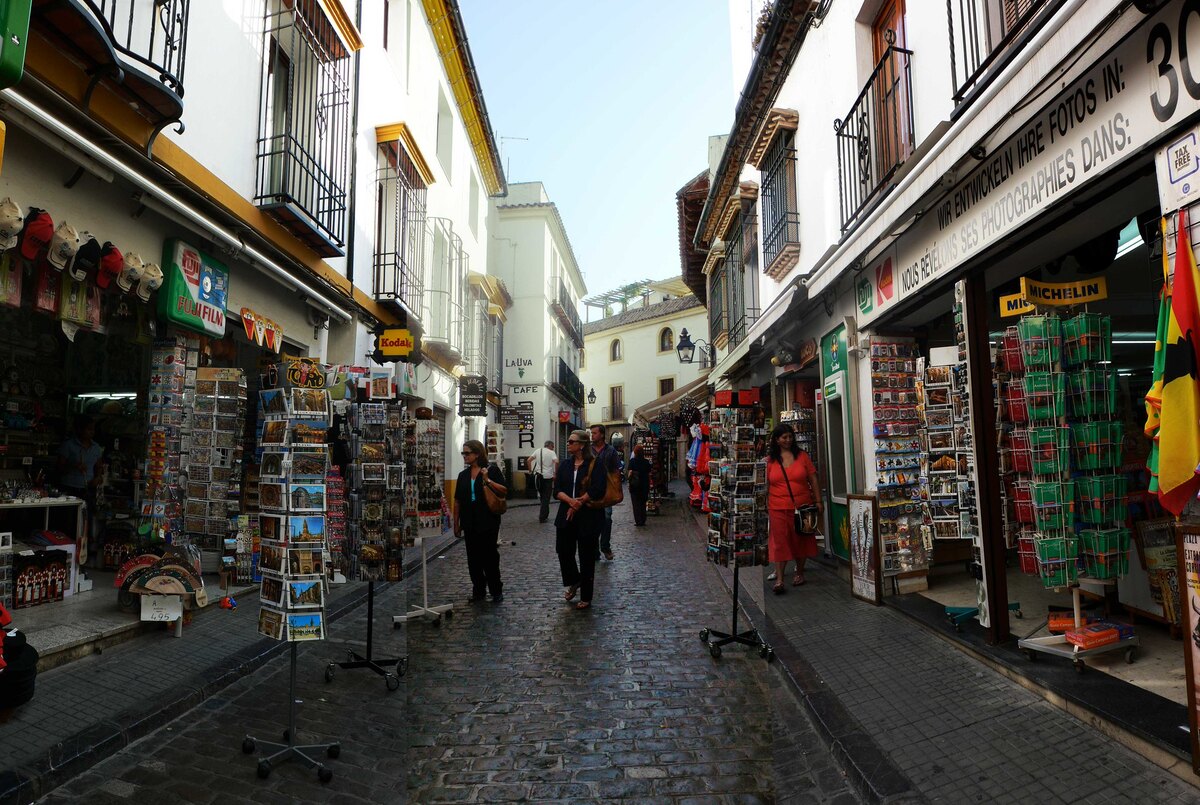
The Jewish Quarter and the Alcázar Viejo of Córdoba
The Jewish Quarter of Córdoba, in addition to its charming streets, harbors another historical treasure: the Alcázar Viejo. Located at the western end of the neighborhood, this ancient Andalusian fortress is an impressive example of military architecture from that era.
The fortress and palace known as the Alcázar de los Reyes Cristianos, characterized by its sturdy walls, houses a significant representation of Córdoba’s architectural evolution. In this stunning location, remnants from earlier times coexist, ranging from Roman and Visigothic influences to elements of Arabic origin, reflecting its status as a preferred site for various rulers of the city. After the conquest of Córdoba by Ferdinand III the Saint in 1236, the building, which was part of the former Caliphal Palace, lay in ruins. Alfonso X the Wise initiated its restoration, a process completed during the reign of Alfonso XI. Throughout history, the Alcázar has served various functions, including being the seat of the Holy Office (Inquisition) and a prison in the first half of the 19th century.
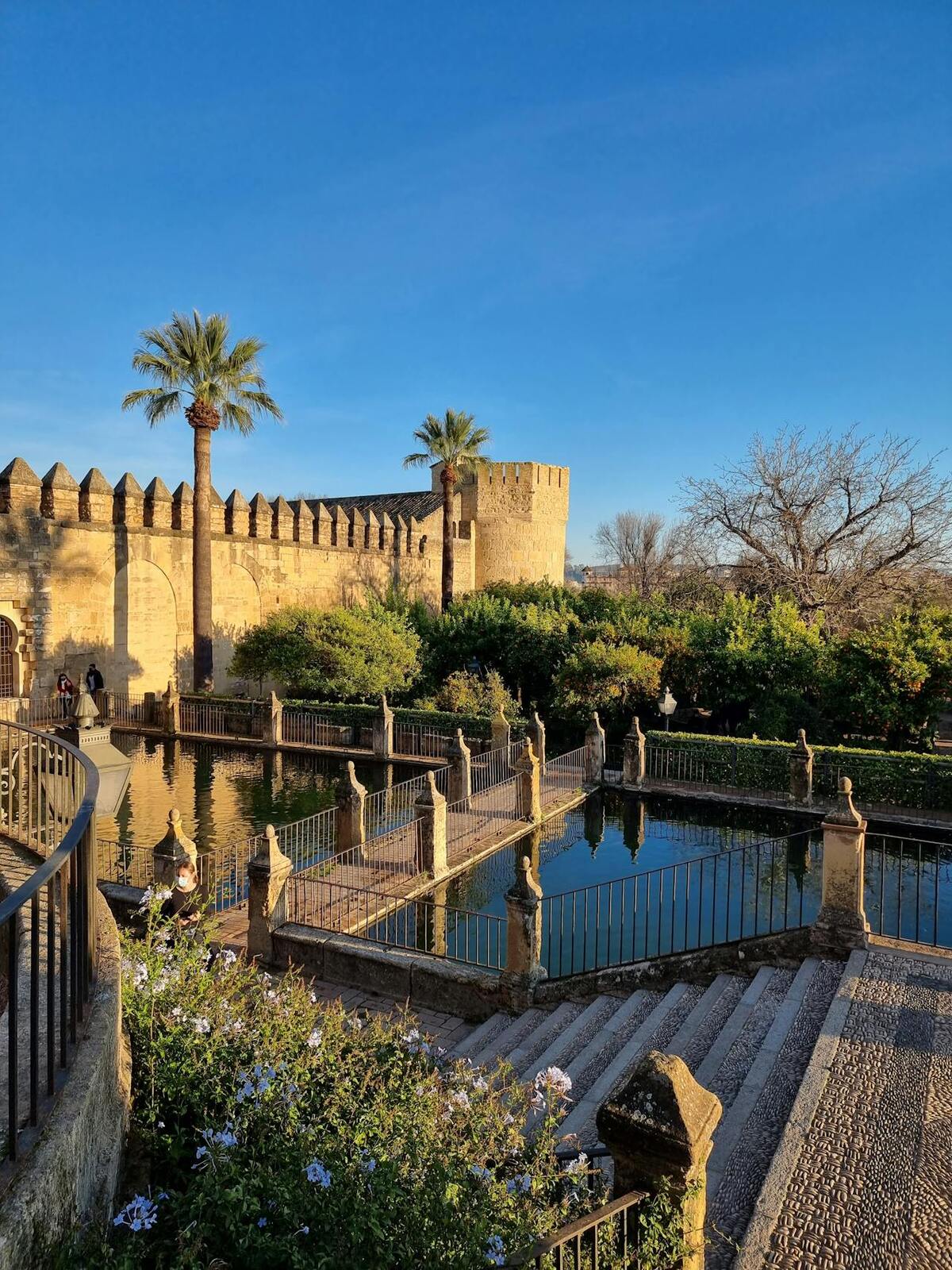
Exploring Alcázar Viejo allows you to delve into Córdoba ‘s past and grasp its strategic importance. Additionally, from its walls, you can enjoy breathtaking panoramic views of the city, including the Mosque-Cathedral and the Jewish Quarter.
Venturing into the Alcázar Viejo is like experiencing a journey through time, discovering the remnants of ancient Córdoba and its connection to the Jewish Quarter. Don’t miss the opportunity to visit this emblematic place during your tour of the Jewish Quarter of Córdoba.
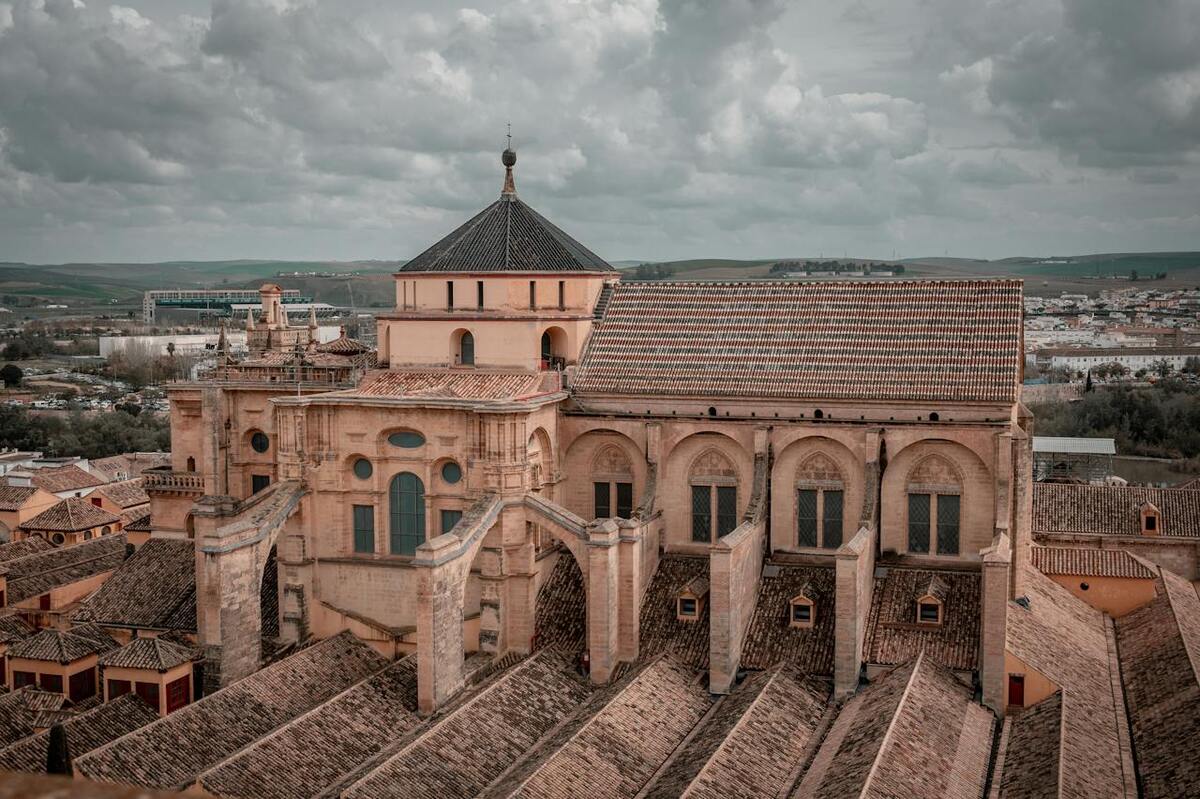
Recommendations for visiting the Jewish Quarter
If you’re planning to visit the Jewish Quarter of Córdoba, here are some recommendations to make the most of your visit:
- Explore the streets and squares on foot: The charm of the neighborhood is best experienced by strolling through its beautiful streets, discovering each corner at a leisurely pace.
- Don’t miss key points such as the Mosque-Cathedral, the Roman Bridge, the Synagogue, the Casa de Sefarad, the Alcázar de los Reyes Cristianos, La Casa Andalusí, or the Casa-Museo del Guadamecí Omeya.
- Get lost in the most prominent streets, such as Judíos, Averroes, Tomás Conde, Manríquez, Almanzor, Romero, Deanes, and Judería, and the Plazas of Maimónides, Tiberíades, Judá Leví, and Cardenal Salazar.
- Discover other recommended monuments: In the Jewish Quarter of Córdoba, you’ll find places like the Mudéjar Chapel of San Bartolomé, which is worth visiting.
Don’t forget to enjoy the unique atmosphere of the neighborhood, with its flower-adorned patios and terraces where you can try traditional dishes. Plan your visit in advance and be surprised by the history and beauty of the Jewish Quarter of Cordoba.
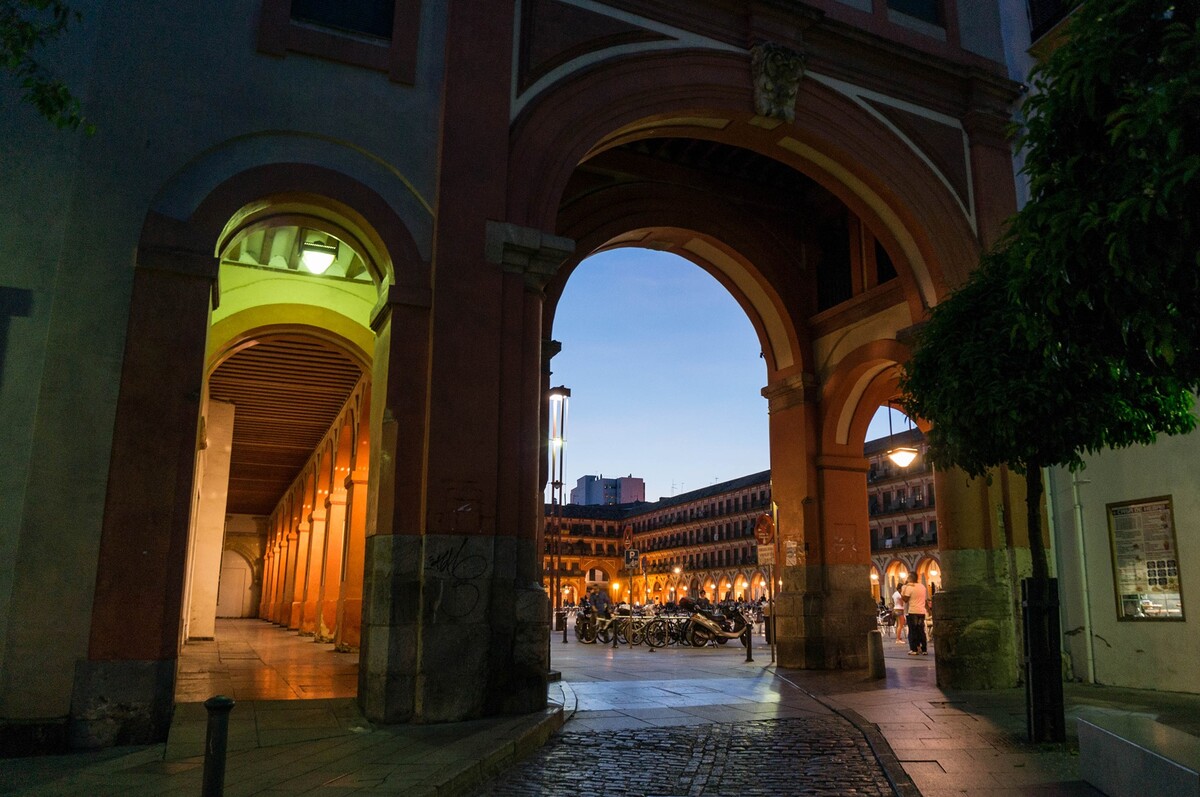
Practical Information for Tourism in the Jewish Quarter
If you’re planning to visit the Jewish Quarter in Córdoba, here are some useful tips to ensure you make the most of your experience:
- Visiting Hours: The Jewish Quarter of Córdoba is a place you can explore throughout the year. However, be mindful of the opening hours of different points of interest, such as museums, which may vary throughout the year. You can find detailed information here: Link to museum and monument schedules
- Walking Tour: The best way to explore the Jewish Quarter is on foot, wandering through its streets. We recommend wearing comfortable shoes as some streets are cobblestone.
- Map and Guide: Before starting your visit, it’s advisable to obtain a map of the Jewish Quarter and a tourist guide to help you discover points of interest and the history of the neighborhood. Alternatively, you can explore freely, letting yourself be guided by its pleasant and welcoming atmosphere.
- Local Cuisine: Take advantage of your visit to taste the delicious cuisine of Córdoba. In the Jewish Quarter, you’ll find numerous restaurants and bars where you can savor typical dishes such as salmorejo, rabo de toro (oxtail), or flamenquín.
- Respect and Tranquility: The Jewish Quarter is a historic and cultural site, so we ask that you respect its tranquility and avoid unnecessary noise. Additionally, please adhere to the guidelines and rules of each place you visit.
With this practical information, you’ll be able to fully enjoy your visit to the Jewish Quarter of Córdoba and immerse yourself in its rich history and charm.
